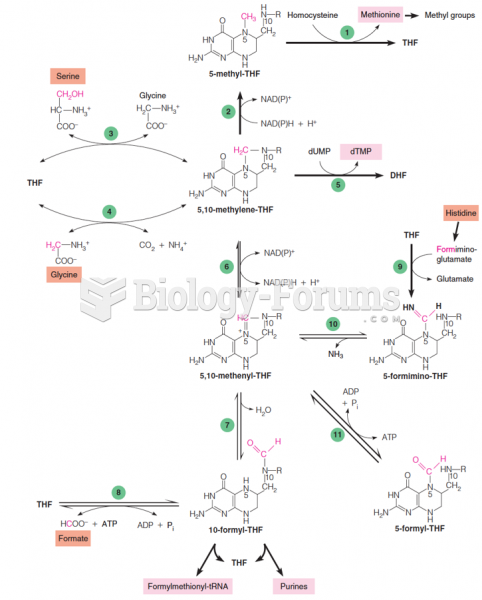|
|
|
Thyroid conditions cause a higher risk of fibromyalgia and chronic fatigue syndrome.
A good example of polar molecules can be understood when trying to make a cake. If water and oil are required, they will not mix together. If you put them into a measuring cup, the oil will rise to the top while the water remains on the bottom.
Human stomach acid is strong enough to dissolve small pieces of metal such as razor blades or staples.
Your skin wrinkles if you stay in the bathtub a long time because the outermost layer of skin (which consists of dead keratin) swells when it absorbs water. It is tightly attached to the skin below it, so it compensates for the increased area by wrinkling. This happens to the hands and feet because they have the thickest layer of dead keratin cells.
Pubic lice (crabs) are usually spread through sexual contact. You cannot catch them by using a public toilet.







